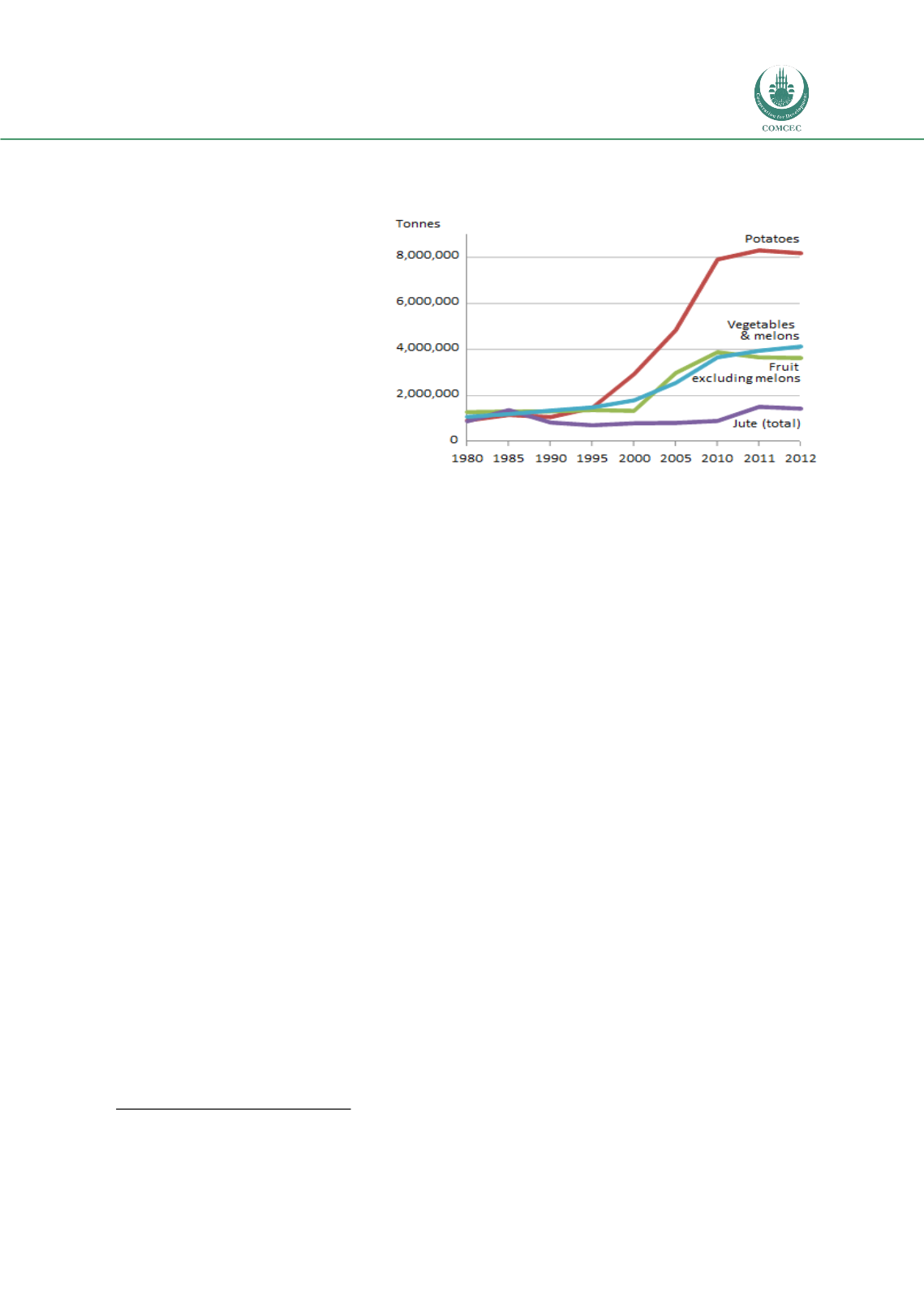

Facilitating Smallholder Farmers’ Market Access
In the OIC Member Countries
59
An interesting feature of this
transformation is that it has been
driven by investments and
actions midstream in the supply
chain, among traders and cold
storage facilities. This experience
differs
from
supply
chain
transformations
observed
elsewhere, where downstream
modernization in food retailing
and processing, catalyzed by FDI
flows,
has
been
the
transformative force.
116
Although
the
transformation
of
Bangladesh’s potato value chain
has been driven by domestic
investments
by
small
and
medium firms in the middle of
the supply chain rather than by FDI flows to downstream segments, the transformation is
similar in that it has involved consolidation and technological and organizational change.
Traditionally farmers sold potatoes at harvest or within a few months of harvest (after
traditional on-farm storage) to the local village market for local consumption. This value
chain was “geographically short and intermediationally short.” To supply urban
consumers, village traders purchased from farmers and then sold to rural wholesale
markets, where wholesalers from cities bought potatoes and then resold them to
retailers—a “geographically long and intermediationally long” value chain similar to that
for rice and wheat.
From the mid-1990s, investments in modern cold storage facilities increased because off-
season demand for potatoes was growing rapidly, production was increasing, and more
electricity was available as the government made major investments in the electricity grid.
The growth in cold storage facilities has given rise to an “intermediate” value chain that is
geographically long but has fewer intermediaries. Farmers sell fresh potatoes at harvest
but keep some of the harvest in cold storage for later sale directly to city wholesale market
traders. While the rural–urban traditional value chain still predominates, the intermediate
chain has emerged quickly and is gaining importance. Storage offers farmers the
opportunity to earn an additional 40 percent of the margin in the value chain.
117
Several other factors have contributed to the transformation in the potato supply chain.
The rapid spread of mobile phones and increased access to electricity have made potato
farmers better informed about what to grow, how to grow it, and for whom. Farmers can
conduct business directly with wholesalers and sidestep village traders. Agricultural
research has enabled farmers to shift to white varieties that yield as much as 40 percent
116
Reardon et al. (2012).
117
Reardon et al. (2012).
FIGURE 31: POTATO PRODUCTION, 1980–2012
Source
: FAOSTAT (FAO 2014).

















